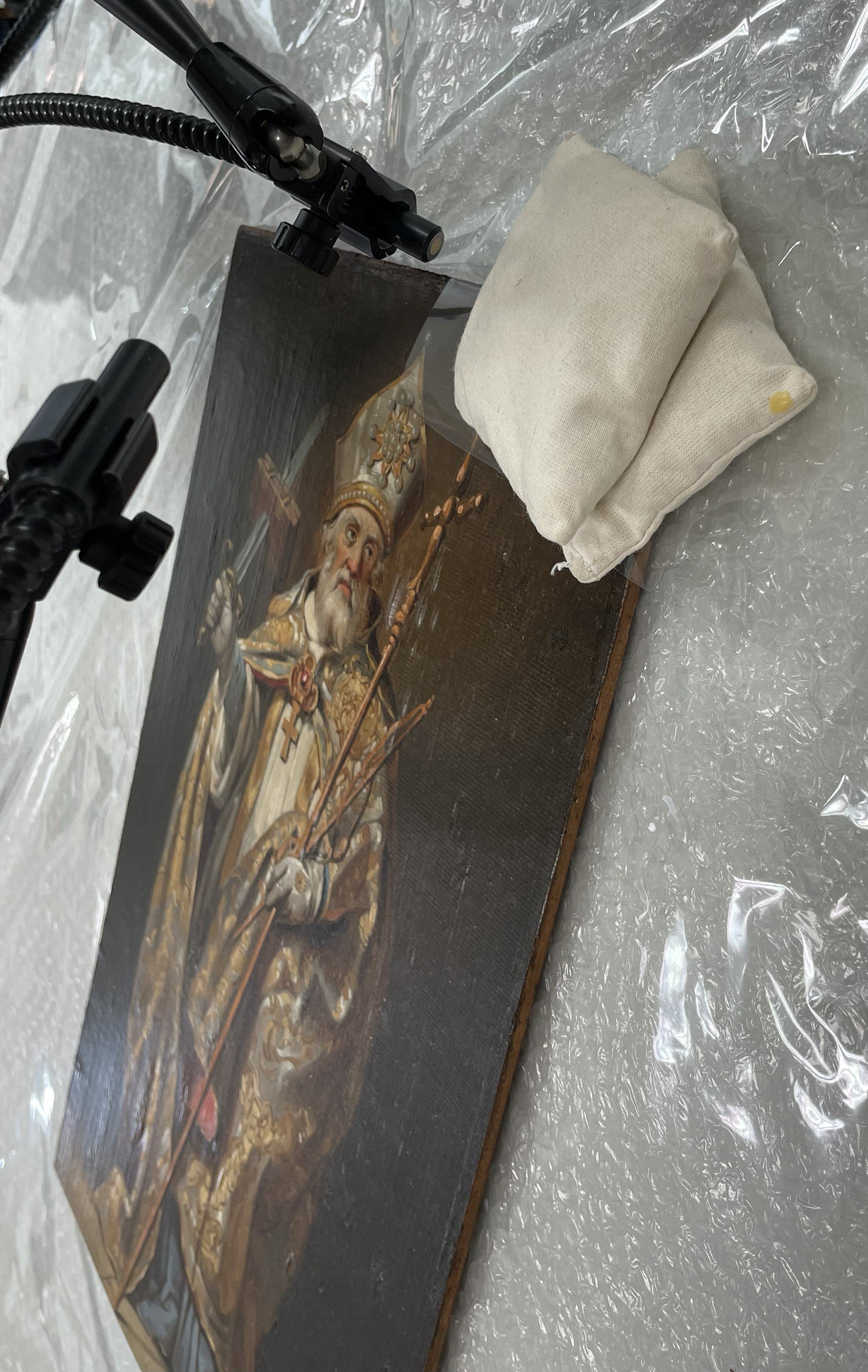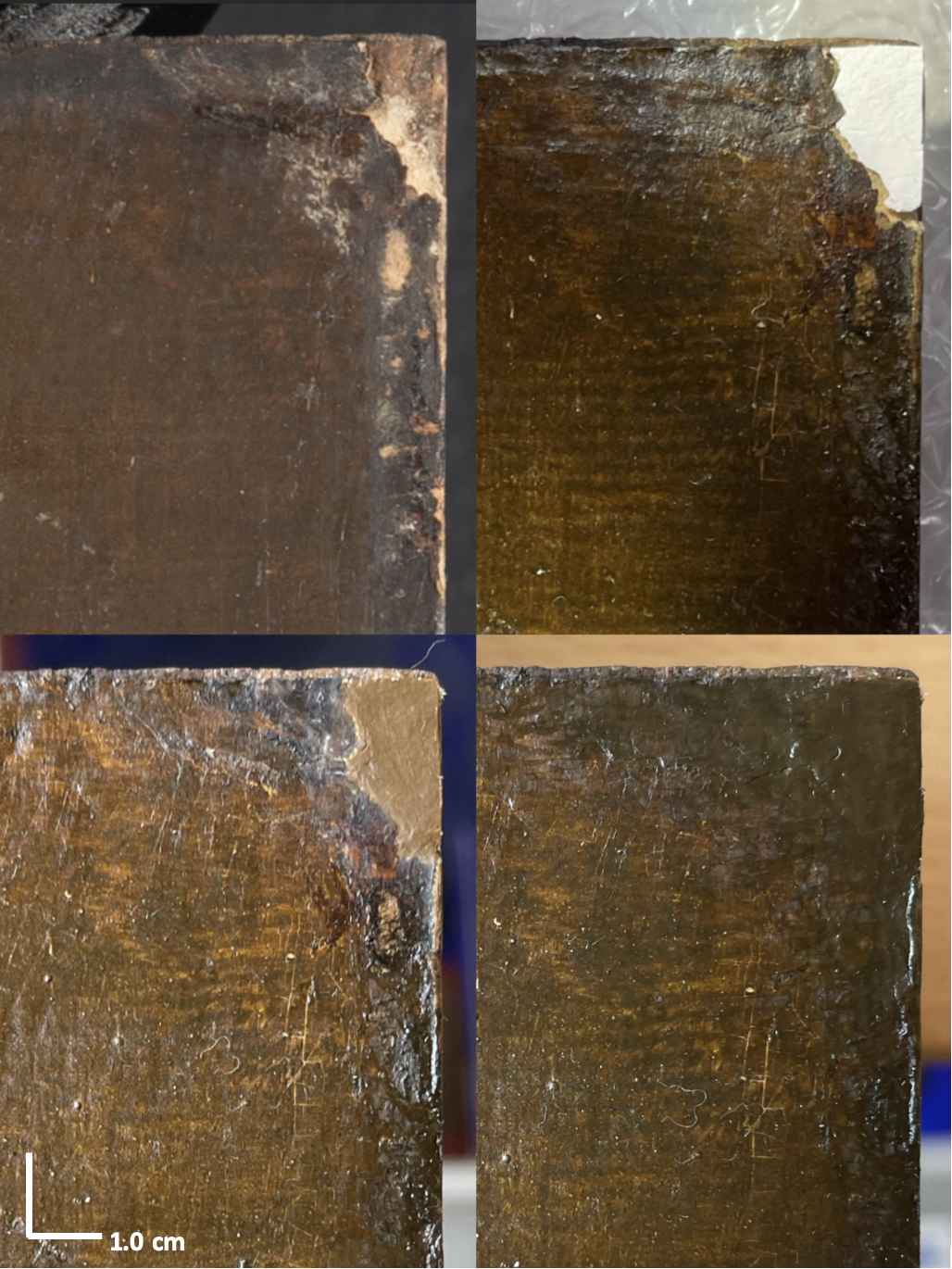Bonifatius
-
Object: Oil on paper on panel
Title: Bonifatius
Artist: Anonymous
Affiliation: Copied after a design by Abraham Bloemaert (1564-1651)
Date: ca. nineteenth century
Dimenstions: 42.0 x 26.7 cm
Collection: Museum Catharijneconvent, Utrecht
-
Surface accretions
Yellowed and brittle varnish
Various losses
Uneven texture (blisters)
-
Goal: to improve the aesthetics and the physical integrity of the painting.
Material considerations: to limit water content for the potentially more porous paper support.
Surface cleaning
The thick layer of foreign deposits needs to be removed to reveal the surface underneath. Cleaning can mitigate further degradations that are triggered by surface dirt and organic materials, like biological threats and moisture attraction.
Varnish removal
The assumed originality of the lower varnish layer complicates the decision-making regarding varnish removal. While original materials ought to be preserved for ethical concerns, the retention of such an oxidized and yellowed varnish can threaten the prospective well-being of the painting as well as challenge the aesthetics and readability of the object. The tendency is, therefore, to remove both varnishes. An area should be left intact for documentation and research purposes.
Revarnish
An intermediate varnish layer should be added to isolate the original material from later additions. This layer will also saturate the original colours, rendering colour-matching in the subsequent retouching procedure more accurate.
Consolidation and Fills
The paper loss will be filled to obtain a smooth and even surface for better reception of the subsequent retouching and the establishment of a uniform surface. Areas of poor adhesion should also be consolidated at this stage.
Reintegration
Since most losses occur in the dark background, their conspicuously lighter appearance requires retouching to ensure pictorial coherence and tonal balance in the final presentation of the painting.
Treatment
highlights…
Surface cleaning
Cleaning surface accretions with an aqueous gel system using cotton swabs. The gel is cleared with demineralized water coupled with immediate dabbing to limit water penetration and retention in the paint structure.
varnish removal
Evolon® CR compress application method:
1. A double-layer Evolon® CR compress is cut into a desired shape that corresponds to the composition, and then using a small brush, a gel based on organic solvents is applied to the compress.
2. Evolon® CR and gel ensemble superimposes the area of treatment. The area is covered under a sheet of Mlinex® to limit evaporation for ±1min.
3. The area is massaged with a finger to help the Evolon® CR further absorb the solubilized varnish(es). This process continues until the upper Evolon® CR becomes saturated.
4. The remaining varnish(es) is then removed by cotton swabs loaded with the cleansing solution via gentle swabbing.








